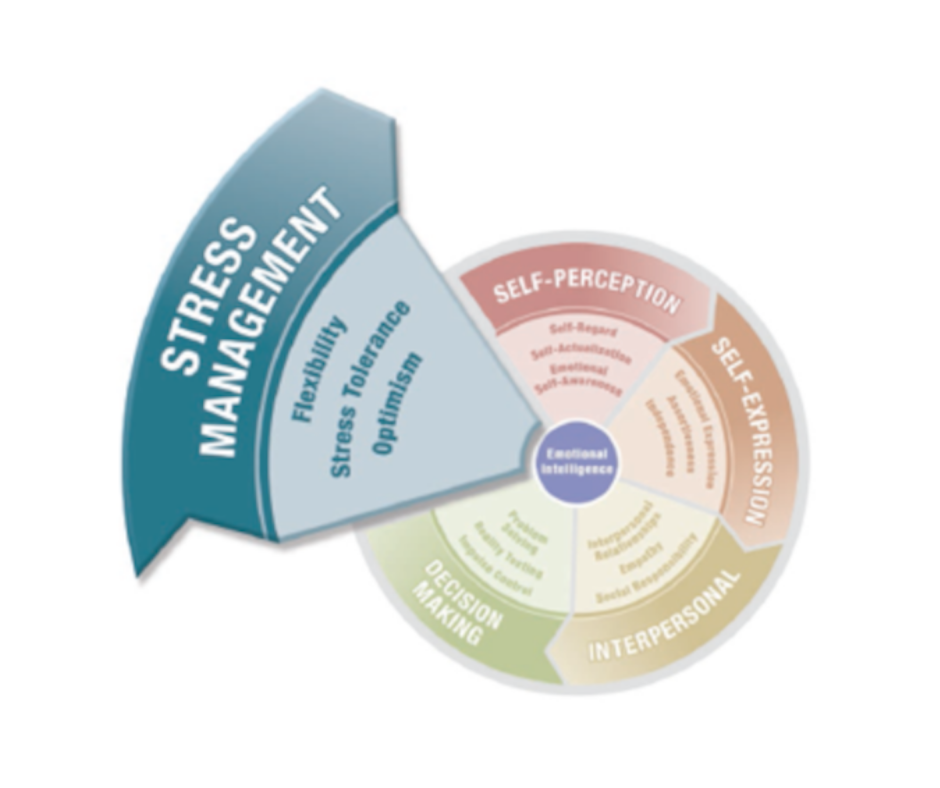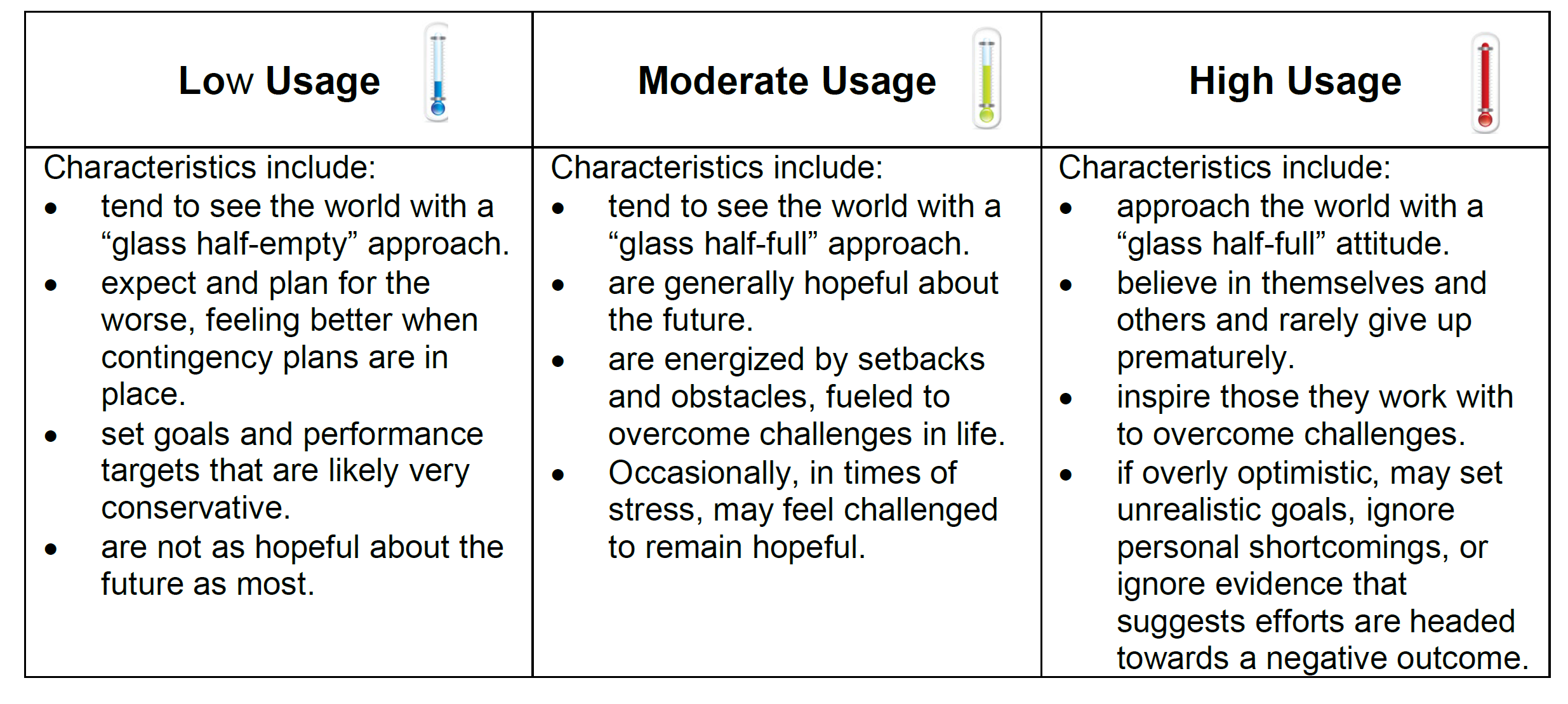Leveraging Flexible Optimism
There are times we can be too optimistic and think things that can't be true. And there are times we are too pessimistic and also think things that aren’t true. We need the skill of flexible optimism. It’s critically needed, now more than ever. But there are differences between blind optimism, flexible optimism, and blind pessimism.
If you go to the Merriam-Webster dictionary, you'll notice that “optimism” is putting the most favorable construction of action and events towards the best possible outcome. That’s likely what most people think of when we mention “optimism.” As a society, we tend to consider optimism is good and we want people to always be positive.
Optimism can quickly turn to blind optimism which is that pie in the sky thinking, where we deny that problems exist. Everything's going to be fine. It's pollyannaish. But very unrealistic.
What we have experienced over the years is that when people face a problem, instead of first looking at why “they can overcome the problem” most people initially focus on why it won’t work — blind pessimism. When we are overly critical in our thinking, we are unable to see beyond what's wrong. We focus on all the reasons something will not work, and a lot of individuals tend to catastrophize situations.
We have found when you allow yourself to dwell on why something won’t work from the beginning; it is very difficult to flip the switch and focus on what is possible. We aren’t saying to ‘not be realistic’. What we are saying is if you want to be creative, innovative, and solution oriented, you need to practice flexible optimism.
Neither blind optimism nor blind pessimism will help us traverse challenging times. What we need is flexible optimism, rooted in reality and possibility.
What is Flexible Optimism?
Flexible optimism builds our resilience and hardiness. Flexible optimism is where we're grounded in real world hopefulness. We equate this to our ability to read our surroundings accurately. Where we don't make mountains out of molehills, nor do we minimize. This will lead us to more Bounce Back moments.

We find the skill of optimism in the composite of stress management of the EQ-i2.0 model. I want to point out that this model is a circle intentionally. It reminds us we need balance to create those effective Bounce Back moments we strive for.
We’ve found that using flexible optimism effectively requires that you have healthy coping strategies (stress tolerance) with moderate to high usage. Balance is the key if we want to experience Bounce Back moments on a regular basis.
Before we get into how to build your flexible optimism, let’s start with a self assessment of your level of optimism.
How Optimistic (or Pessimistic)
Are You?
In general, where do you fall on the pessimism/optimism scale? Are you someone who catastrophizes things? Are you blindly pessimistic? Maybe you’re that blindly optimistic person trying hard to make everything ‘okay’ for yourself and others. Or are you in that middle ground of flexible optimism?
If you're not sure where you fall, ask somebody who is around you all the time. I'm sure they'd be willing to tell you if you're positive or negative (ask at your own risk).
Another way to assess where you are now is to evaluate how frequently you use of optimism. Refer to the chart below:

How would you rate your usage of optimism? Low, moderate, or high?
Leveraging Flexible Optimism —
a Four-Step Process
Dr. Martin Seligman developed a four-step process that can help you leverage your flexible optimism. Seligman, Director of the Penn Positive Psychology Center, uses his simple exercise, Put It in Perspective, on the COVID-19 pandemic as an example for managing stress and uncertainty
Step 1: Ask yourself, “what is the worst possible scenario that could happen?”
On the negative side, you might think:
- I’m going to get this.
- It’s going to be very bad.
- I could die.
That’s one end of the spectrum, blindly pessimistic. The next step you might go to is the other end of the spectrum, blindly optimistic.
Step 2: Ask yourself, “what is the best possible outcome?”
You might sit back and say:
- Hey, I'm not gonna get this. Nor will my family or loved ones.
- It will blow over.
- I'm gonna continue on as I had before COVID happened?
That's unrealistic as well. You're on two ends of the spectrum, but it allows you to see what's the worst and what's the best. Where you really start to look at things is step number three.
Step 3: Challenge yourself and ask, “what’s most likely to happen?”
Looking at what is most likely, you might think:
- Well, there’s a good chance I’m going to get this.
- I will probably be uncomfortable.
- I’ll be down for a while, but I’m going to recover.
- I’m going to be okay.
Step 4: You can then plan for the more realistic scenario of what really is probably going to happen.
You develop a plan around it.
- I don't have it yet. I'll continue to take preventative measures.
- If I have symptoms, I’ll call a doctor like I should.
- And I'm going to have a backup plan, if I get sick. I’ll identify who's going to take care of the kids, how I’ll continue to work at home if I can, or what I can do if I can’t work.
Moving through these four steps allows you to leverage flexible optimism and build the Bounce Back muscles you need in times of uncertainty. This four-step process is great for what you face in 2020, and it will be relevant for any situation you face. Sarah Turner shares her real-life example of moving through this four-step process below.
Just as many others have experienced this year, new information comes in, situations keep changing, and we go into that instant panic mode. It happened to me this summer.
My husband and I got a message saying that we might not have access to summer care for our kids. I went through these four steps because the first thing I thought was, “oh my gosh, we're not going to have a chance to have the kids in camp. I won’t get any work done all summer.” You go to that negative, blindly pessimistic state. Then you do a 180 and say, “Wait, it's probably going to be fine. Everything's going to be good, we'll get everything we want.” Blindly optimistic!
Then you look at step three, and I really did, I started thinking about what was most likely to occur. Some of our camps will get canceled (that was true). But some of them will exist (that was true as well).
We had to go to step four and spend some actual time planning. I had to think about how I was going to use my mother-in-law. How my husband and I were going to have to trade days during certain weeks. What I noticed about moving through these four steps was that it actually gave me forward momentum. I felt like I was really getting traction, creating those positive outcomes.
I was in a Bounce Back moment. It gave me something to do versus staying in that state of catastrophic thinking, where I really wasn’t accomplishing anything.
Denny Faurote and Sarah Turner want to challenge you to get to that Bounce Back moment as well. We want you to reach steps #3 and #4 where you look at what’s most likely to happen and plan for those realistic scenarios. We want you to leverage flexible optimism, build resilience, increase hardiness, and Bounce Back.
Build Your Flexible Optimism
Grow FLEXIBLE OPTIMISM as an Individual
- Practice walking through the four steps from a recent experience (personal or professional) where your thoughts took on an overly critical response.
Step 1: Worst possible scenario:
Step 2: Best possible outcome:
Step 3: Most likely to happen:
Step 4: Plan for the most realistic scenario:
- Practice catching yourself when your perspective is skewed. As the term “practice” implies, you will get better and quicker at moving through steps #1 and #2. You’ll reach step #3 sooner so that you can build your flexible optimism muscle.
Grow FLEXIBLE OPTIMISM as a Team
- Share this article with others. (You can also share this article on LinkedIn, Twitter, or Facebook)
- Share the 6-Minute StretchTM Challenge #2 video
- Get your team involved. Ask them what they’re going through. Are they trending towards pessimism? Or optimism? And how does that affect them and your work?
Flexible optimism is important today. As people continue to work from home (or not able to work from home), the more their optimism goes down. We must challenge that trend for ourselves, our family, and our teams.
The CHALLENGE
Denny Faurote and Sarah Turner started the 6-Minute Stretch Challenge. They challenge you to take 6 minutes to grow your resiliency and your Bounce Back Factors. Grow as an individual and grow as a team.
Check out the video and the resource sheet for Challenge #2 - Leveraging Flexible Optimism.
You can also sign up and get the 6-Minute StretchTM Challenges in your inbox every other Friday. Share these with your friends, your family, and your team. Help everyone leverage their flexible optimism. Because it's not just about helping ourselves, but helping others do the same. It's about bringing your best self to every situation. Life’s calling! Live with passion and make it a great day!